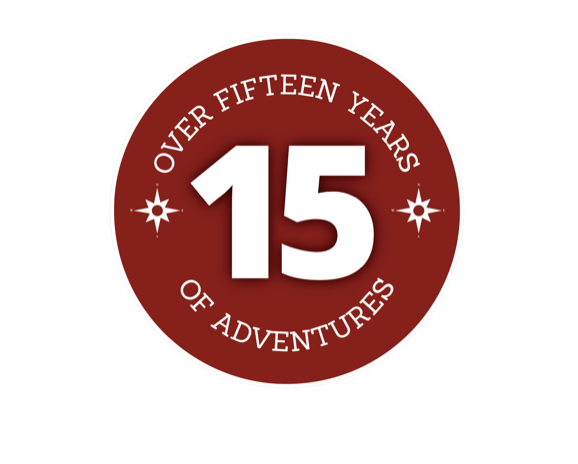History of Hornstrandir region
I’m going to tell you a story of my wife’s grandmother, Rebekka Stígsdóttir that lived in Hornstrandir region. She was born in 1923 so she is 91 now and still going strong. Hornstrandir region is a very special area in the Westfjords of Iceland. There is no road connection, no power lines, no livestock and no people have lived there for the past 70 years or so.
The area became a nature reserve in 1975 and it’s the only area in Iceland where the Arctic fox is protected. The nature is wild in Hornstrandir. With untouched landscapes from the highest mountains to the sea, with fjords, coves and bays that are the perfect playground for all sorts of outdoor activities in summer and in winter. Two of the highest birdcliffs in the North Atlantic are in Hornstrandir where about 6 million sea birds nest in the summer.
You noticed I said playground. But in the old days people had to survive there, totally dependant on what mother nature gave them mostly in the spring and summer. Living in small houses often with big families and hardly any electricity or communication. All travelling was on foot or with horses.
Well, let the story begin…..
Rebekka looked over the bay of Hornvík. It was spring time. The view from Rangalaskarð Pass was beautiful as always. There was still snow on the mountainsides after the long winter but spring had arrived in the lowlands with golden plovers and red shank birds singing in the low grass. The last rays of the sun kissed her farm of Horn. The grass by the river delta was illuminated with green colours and she could hear the kittiwakes in the distance doing their daily bathing ritual in the river. The occasional sounds of the Arctic fox could be heard, marking its territory from intruders to their kingdom.
“The boys are probably down from the cliffs”, Rebekka thought to herself. They had for sure been rappeling far down the sheer sides off the cliffs like every spring, collecting guillemot eggs. Fresh eggs probably on the table tonight. What a delicacy! She’s finally home to her beautiful homegrounds. So alive and all my friends and family waiting anxiously for my return. Rebekka got going again and almost ran the rest of the way. She had about two hours ahead of her to Horn. She was 16 years old and had not been home since New Year.
In January she had been sent to Hesteyri, a small village further south, where she was supposed to assist an old lady; be her companion and work in the house, cooking and do the laundry. The old lady had injured herself in an accident and lived alone in her house. Her sons were staying the winter in Aðalvík Bay, rowing a fishing boat in the cold subarctic winter. The fishing grounds were better outside of Aðalvík. The sea had claimed the old ladies husband many years ago.
That January, Rebekka had said goodbye to her family and friends in Horn with a smile on her face. She hugged her sisters and made jokes with her brothers. She promised her mother that she would behave, work hard and be true to her family reputation. Then she walked down to the shore, and out of sight she started crying. “What is this”, she asked herself. Crying like a small baby. “I have to be stronger than that. I will only be few away for few months and will return in the spring when life is easier” she told herself.
It was a group of five that left Horn that morning and the darkness of January still surrounded them. That time of the year you can expect ferocious storms and it’s better to be well prepared and use the short daylight well. Her father Stígur rowed the boat to Rekavík cove on the west side of the bay. On the shore she hugged her father for the last time and walked up to Atlaskarð Pass with her three friends that were there to make sure she would make it all the way to Hesteyri.
The slope was slippery down to Hælavík Bay and then along Stórikambur Ridge. They stopped briefly in Búðir farm and were invited inside for lunch and to rest their tired legs. They then continued to Kjaransvík Bay and up to the mountain pass. The final part of the trip was along the edges of Hesteyrarfjörður Fjord and to Hesteyri. The journey had taken longer then expected since Gunna, the girl in the group had hurt her leg and one of the boys ran to Hesteyri and got a boat to pick them up at the shore that brought them safe and sound the last stretch.
The route from Hornvík to Hesteyri was commonly used in those years. In Hesteyri was a rather big community then with nearly 200 people with postal service, doctor and midwife and a chandlery store. Most people worked in the herring plant that had first been a Norwegian whaling station until late 1900’s. The route the group walked in the year of 1940 is around 17 km and they didn’t have skis so the deep snow made the walking hard, sinking down in every step. Still they walked the route in only 8-9 hours. In those days, people almost ran between farms and didn’t spend time taking photos or enjoying the view so much. Time was precious and always many tasks ahead to survive in the unforgiving nature on the edge of the Arctic Circle. Today, people normally use two days to walk that distance and stay one night in Hlöðuvík Bay before continuing onwards.
Rebekka was supposed to stay three months with Ketilríður the old lady in Hesteyri. Week before her set departure back home, a message was sent to her. She was asked to come to Kvíar Farm situated on the headland between the fjords of Veiðileysufjörður and Lónafjörður. The wife of Jón the farmer in Kvíar was very ill and he needed assistance with the children and in the kitchen. The walk between Hesteyri and Kvíar is very long so Jón came on his boat to pick her up in the beginning of April. She stayed in Kvíar for over a month. Kvíar was very isolated from the rest of Hornstrandir and no other farms in easy walking distance. Only this one house and the two families that lived there until 1948 when everyone left in search for better life and education for their children. Kvíar was a big farm for that time. The conrete house was and still is the biggest house in Hornstrandir and the farmers there were great craftsmen and the boats they built from driftwood, were considered the best in the whole region. They grew potatoes and turnips, had horses, few cows and many sheep. And even planted trees that are the only trees in the nature reserve. They also had wind generators and hydro turbine in the river. That was considered quite a luxury at that time to be able to listen to the radio and get news from the outside world.
It was the beginning of May and finally, Rebekka was on her way home again. Jón escorted her those 23 kilometers that are between the two farms. Jón rowed the boat the first six kilometers to Rangali at the head of Lónafjörður fjord and then they walked the rest over the mountains. As said earlier, conditions were different then. Today we like to enjoy nature and walk on an easier pace, experience the silence and perfect solitude of the Nature Reserve. Walking in the mountains is todays’s physical and mental workout where we seek to be one with the natural world. Gain some kind of balance in the chaos of modern society. In the old days, nature was not so much to enjoy, but to use with respect to make a living.
Rebekka was very happy to be home again after being months away from her loved ones. She ran the last meters and greeted her family. Everything was in full swing when she finally came to Horn. All her nine siblings were home, men and boys from surrounding farms were also there for the egg season and the midwife from Hesteyri had arrived, assisting a pregnant woman from the lighthouse in Látravík Bay. Her girlfriends and two sisters talked for hours about her time away and the gossip from Hesteyri and what had happened in Horn in her absence. The lambs were being born in the fields and the spring was mild and little snow in the lowlands. The flora was blossoming earlier then usual.
The pregnant woman from the lighthouse in Látravík had been in Hornvík for three weeks. She and the midwife were waiting for a boat to take them to Ísafjörður, the biggest town in the Westfjords. The sea had been rough and surf on the beach made it impossible to bring them out to the coastal ship that sailed between the bays and Ísafjörður at that time. The woman was restless. She had four small children in Látravík. Her sister had come to Látravík from a nearby farm to take care of them while she was giving birth. Now her sister had to return home due to sickness in her family. The young woman had decided to give up the chance of going to Ísafjörður and walk back to the lighthouse and give birth to her child there. Far away from proper medical services. The couple in Horn, Stígur and Jóna, said goodbye to her neighbour and wished her well. The young girls walked with her up to the pass. Stígur and Jóna also promised to send Rebekka to help her out with the children and she was not pleased. Actually she was very angry. She had just arrived home and now she was sent once more to take care of someone’s else children. “Couldn’t people just take care of their children themselves” she thought to herself. The route is about 6 kilometers to Látravík. From Almannaskarð Pass is a panoramic view of the whole coastline and the high peaks of Hornbjarg birdcliffs.
The midwife carried her medical bag that included sanitizer, scissors and a small book with good advices and instructions. That night a messenger came running to Horn. The placenta had not come out. She needed medical attention right away and they had to contact the doctor in Hesteyri as soon as possible. The radio in Horn was the only mean of communication to the outside world. Rebekka was sent to Látravík to assist the midwife. But everything worked out, the placenta came in the end and the doctor was notified. Rebekka stayed in Látravík for two weeks. The child was named Freyja and lives in Denmark.
That’s how life was in Hornstrandir in the year 1940. Isolation, long distances between farms but generally good life with plenty of food and with good cooperation and solidarity, the inhabitants could generate good quality of life for that time. Nobody was bigger or more important then the other. And nobody was too proud to accept assistance. The last people left Hornstrandir in 1954. After the second world war, many people moved away when job opportunities grew in the bigger settlements around the coast of Iceland. More boats had engines and grew bigger. Those ships needed harbour facilities which didn’t exist in the area because of the open sea to the North and big swell. Hornvik was abandoned in 1948. Stígur and his wife Jóna were the last inhabitants. Stígur got sick that summer and had to go to the hospital. Jóna couldn’t take care of the farm alone with her 15 year old son. All the other children had started their own families and moved away.
An Icelandic saying goes “Römm er sú taug sem rekka dregur föðurtúna til” which means the strings to the roots of your existence are strong and wants to pull you back. And we always want to return to our home grounds and the descentants of the farmers in Hornvík have returned every summer to collect eggs, catch fish and birds and enjoyed the summer with their families. The farm still stands and in good shape, well maintained and beautiful. These people enjoy being far away from politics, Facebook, mobile phones, shopping malls or other modern amenities.
We at Borea Adventures have strong roots in Hornstrandir, have grown up with stories of hardship, isolation and sacricifes. Victories and defeats. We enjoy returning again and again for kayaking, trekking, sailing, skiing and living the simple life where history is behind every rock. We want to invite you to come along to the Hornstrandir Nature Reserve.
THANK YOU




